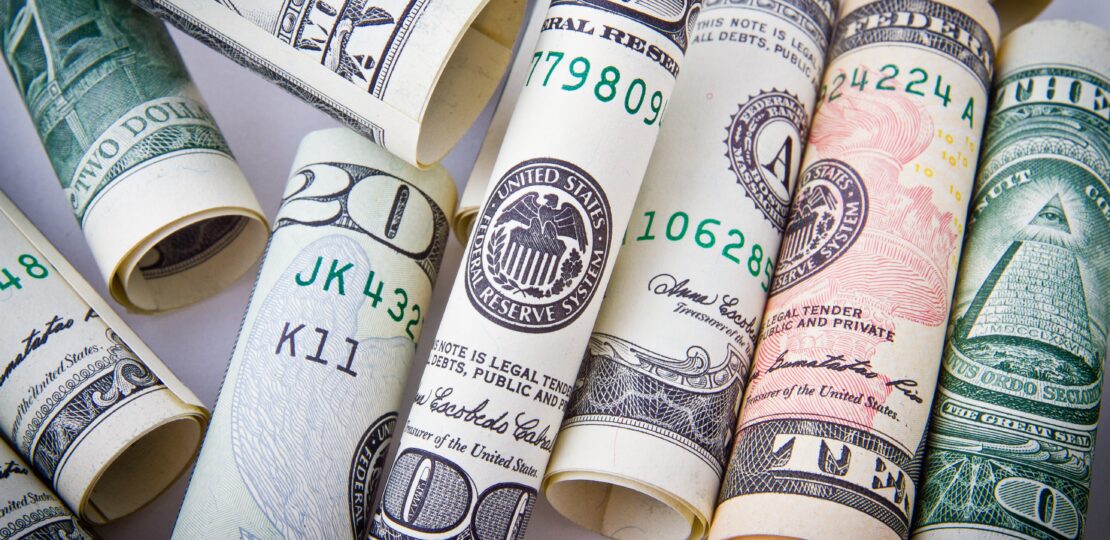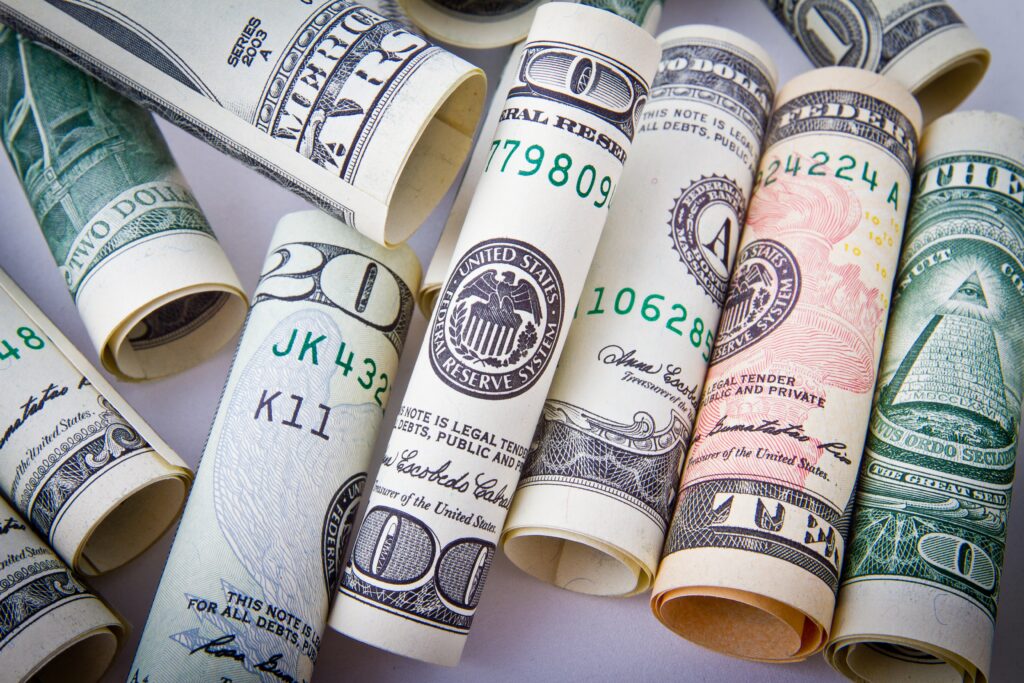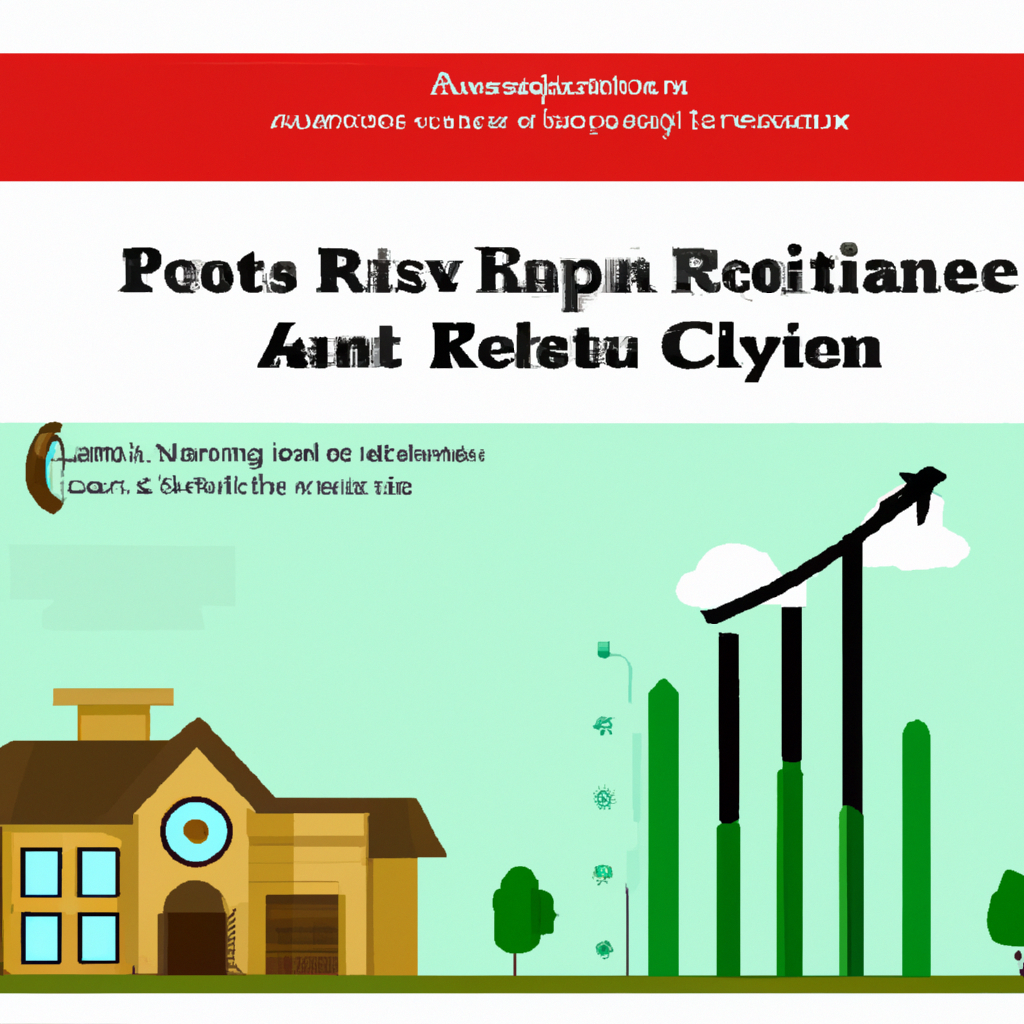How Do I Calculate The Potential Return On Investment (ROI) For An Investment Property?
October 10, 2023 | by Catherine Jones

Looking to invest in a property but unsure of how to calculate the potential return on investment? In this article, we will guide you through the steps to determine the ROI for an investment property. Whether you’re a seasoned investor or just starting out, understanding the potential profitability of your investment is crucial. By using some simple financial calculations, you can make informed decisions and maximize your returns. So let’s dive in and discover how you can calculate the potential ROI for an investment property.
Factors to Consider for Calculating ROI
When evaluating the potential return on investment (ROI) for an investment property, there are several key factors that need to be taken into consideration. These factors can have a significant impact on the profitability and success of the investment. By carefully analyzing and understanding these factors, you can make informed decisions about whether a particular property is a good investment option for you.
Property Price
The first factor to consider when calculating ROI is the price of the property. It is important to conduct a thorough market analysis to determine the fair market value of the property. This can be done by researching comparable sales in the area or seeking the professional opinion of an appraiser. By understanding the property’s market value, you can ensure that you are not overpaying and that the investment has a good potential for appreciation over time.
Rental Income
Another important factor to consider is the rental income that the property is likely to generate. This can be determined through market research and a careful analysis of rent comparables in the area. By understanding the rental potential of the property, you can estimate the amount of income that it will generate and factor this into your ROI calculations.
Operating Expenses
Operating expenses are costs incurred in the day-to-day management and maintenance of the property. These expenses can include property taxes, insurance, utilities, maintenance and repairs, and homeowner association (HOA) fees. It is essential to accurately estimate these expenses in order to calculate the net income from the property. By deducting the operating expenses from the rental income, you can determine the property’s net rental yield and its impact on the overall ROI.
Vacancy Rate
The vacancy rate is a measure of the time period in which the property is unoccupied and not generating rental income. It is important to consider the historical vacancy rate in the area as well as the local rental demand when calculating ROI. By factoring in a realistic vacancy rate, you can estimate the potential impact on the property’s rental income and adjust your ROI calculations accordingly.
Financing Costs
If you are obtaining financing to purchase the investment property, it is important to consider the costs associated with the loan. This includes the interest rate, loan term, loan amount, and loan-to-value (LTV) ratio. These factors will determine the monthly mortgage payment and impact the property’s cash flow. By carefully evaluating the financing costs, you can determine the impact on the property’s ROI and make informed decisions about the feasibility of the investment.
Maintenance and Repair Costs
Maintenance and repair costs are an inevitable part of owning an investment property. It is important to estimate these costs accurately in order to determine the property’s net income. Regular inspections can help identify any maintenance issues early on, allowing you to budget for repairs and factor them into your ROI calculations. Additionally, it is important to account for emergency repairs that may arise unexpectedly.
Property Management Fees
If you choose to hire a property manager to handle the day-to-day operations of the investment property, it is important to consider the associated fees. Property management fees can vary, but typically range from 8% to 12% of the monthly rental income. These fees cover services such as tenant screening, rent collection, maintenance coordination, and legal compliance. By understanding the costs and services provided by a property manager, you can assess whether it is a worthwhile expense and include it in your ROI calculations.
Property Appreciation
Property appreciation refers to the increase in value of the property over time. While it is difficult to predict future appreciation rates, it is important to consider this factor when calculating ROI. By analyzing historical data and market trends, you can make an informed estimate of the property’s potential appreciation. This can have a significant impact on the overall ROI and long-term profitability of the investment.
Tax Benefits
investment properties offer various tax benefits that can positively impact the ROI. These benefits can include deductions for mortgage interest, property taxes, and depreciation. It is important to consult with a tax professional to fully understand and maximize the tax benefits associated with your investment property. By taking advantage of these tax benefits, you can increase your ROI and enhance the overall profitability of the investment.
Exit Strategy
Having a well-defined exit strategy is essential when investing in property. This strategy outlines your plan for exiting the investment and realizing your ROI. There are several options for an exit strategy, including selling the property, refinancing, or passing it to heirs. By considering your long-term goals and financial objectives, you can determine the most suitable exit strategy for your investment property. Planning your exit strategy from the beginning allows you to make strategic decisions throughout the investment period and maximize your overall ROI.
Calculating ROI
Now that we have explored the various factors to consider, let’s dive into the different methods for calculating ROI. These calculations will help you assess the potential return on investment for a particular property and make informed decisions about its profitability.
Gross Rental Yield
Gross rental yield is a simple calculation that measures the relationship between the annual rental income and the property’s purchase price. To calculate the gross rental yield, divide the annual rental income by the property’s purchase price and multiply by 100.
Gross Rental Yield = (Annual Rental Income / Property Purchase Price) * 100
For example, if the annual rental income is $30,000 and the property purchase price is $500,000, the gross rental yield would be:
(30,000 / 500,000) * 100 = 6%
This means that the property generates a rental income equivalent to 6% of its purchase price.
Net Rental Yield
Net rental yield takes into account the property’s operating expenses and vacancy rate, providing a more realistic measure of the return on investment. To calculate the net rental yield, subtract the operating expenses and potential vacancy loss from the annual rental income, and divide by the property’s purchase price.
Net Rental Yield = ((Annual Rental Income – Operating Expenses – Potential Vacancy Loss) / Property Purchase Price) * 100
For example, if the annual rental income is $30,000, operating expenses are $8,000, potential vacancy loss is $2,000, and the property purchase price is $500,000, the net rental yield would be:
((30,000 – 8,000 – 2,000) / 500,000) * 100 = 4%
Capitalization Rate
The capitalization rate, also known as the cap rate, is a widely used method for evaluating the profitability of an investment property. It measures the property’s net operating income (NOI) as a percentage of its purchase price. To calculate the capitalization rate, divide the NOI by the purchase price and multiply by 100.
Capitalization Rate = (Net Operating Income / Property Purchase Price) * 100
The net operating income is calculated by subtracting the property’s operating expenses from its total rental income.
For example, if the annual net operating income is $20,000 and the property purchase price is $500,000, the capitalization rate would be:
(20,000 / 500,000) * 100 = 4%
The capitalization rate provides a measure of the property’s cash flow in relation to its value, allowing for easy comparison with other investment opportunities.
Cash on Cash Return
The cash on cash return is a measure of the return on investment based on the amount of cash invested in the property. It takes into account the financing costs and provides a more accurate picture of the return when utilizing leverage. To calculate the cash on cash return, divide the annual cash flow by the total cash investment and multiply by 100.
Cash on Cash Return = (Annual Cash Flow / Total Cash Investment) * 100
The annual cash flow is calculated by subtracting the financing costs and operating expenses from the annual rental income.
For example, if the annual cash flow is $10,000 and the total cash investment is $100,000, the cash on cash return would be:
(10,000 / 100,000) * 100 = 10%
This means that the property generates a cash return equivalent to 10% of the total cash invested.
Return on Investment (ROI)
The return on investment (ROI) is a comprehensive measure that takes into account all the factors discussed earlier, including rental income, operating expenses, financing costs, and potential appreciation. To calculate the ROI, divide the annual net income by the total cash investment and multiply by 100.
Return on Investment (ROI) = (Annual Net Income / Total Cash Investment) * 100
The annual net income is calculated by subtracting the financing costs, operating expenses, and potential vacancy loss from the annual rental income.
For example, if the annual net income is $15,000 and the total cash investment is $150,000, the ROI would be:
(15,000 / 150,000) * 100 = 10%
This means that the property generates a return on investment equivalent to 10% of the total cash invested.

Property Price
The price of the property is a crucial factor to consider when calculating ROI. Conducting a market analysis is essential to determine the fair market value of the property. This can be done by researching comparable sales in the area or seeking the professional opinion of an appraiser. Understanding the property’s market value allows you to assess its potential for appreciation and make informed decisions about the investment.
Market Analysis
A market analysis involves researching and analyzing the local real estate market to determine the fair market value of a property. This includes examining recent sales data, market trends, and supply and demand dynamics. By evaluating these factors, you can gain a better understanding of the property’s market value and assess its potential for long-term appreciation.
Comparable Sales
Comparing recent sales of similar properties in the area can provide valuable insights into the fair market value of the property. By examining the sales prices of comparable properties, you can determine a realistic price range for the property in question. This information can help you negotiate a fair purchase price and evaluate the potential return on investment.
Appraisal
An appraisal is a professional assessment of a property’s market value. Appraisers use various methods, including recent sales data and property inspections, to determine the fair market value of the property. This independent assessment provides an unbiased opinion of the property’s worth and can be useful when evaluating the potential ROI.
Rental Income
Rental income is a key component of the ROI calculation. It is important to accurately estimate the income that the property is likely to generate. This can be done through market research and a careful analysis of rent comparables in the area.
Market Research
Market research involves collecting and analyzing data on rental rates, vacancy rates, and rental demand in the area. By examining market trends and local economic factors, you can determine the potential rental income that the property can generate. This information helps you understand the rental market dynamics and make informed decisions about setting appropriate rent levels.
Rent Comparison
Comparing the rental rates of similar properties in the area can provide insights into the potential rental income of the investment property. By examining the rents of comparable properties, you can determine a realistic rental range for the property in question. This information allows you to estimate the rental income and assess its impact on the ROI.
Rent Potential
Assessing the rent potential of a property involves considering factors such as location, property condition, and amenities. Properties with desirable features and in high-demand areas typically command higher rents. By evaluating the property’s attributes and comparing them to the local rental market, you can estimate its rent potential and determine its impact on the ROI.

Operating Expenses
Operating expenses are costs incurred in the day-to-day management and maintenance of the property. It is important to accurately estimate these expenses in order to calculate the net income from the property.
Property Taxes
Property taxes are assessed by local governments and can vary significantly depending on the location and value of the property. It is important to research the property tax rates in the area and factor them into your operating expense calculations. Property taxes can have a significant impact on the net income and overall ROI of the investment.
Insurance
Property insurance is essential for protecting your investment property against risks such as fire, theft, and liability claims. The cost of insurance can vary depending on factors such as the property’s location, size, and condition. It is important to obtain insurance quotes from multiple providers and consider the coverage options and premiums when calculating the operating expenses.
Utilities
Utilities, such as water, electricity, and gas, are necessary for the operation of the property. The cost of utilities can vary depending on factors such as the size of the property, the number of occupants, and the local rates. It is important to estimate the monthly utility expenses and include them in the operating expense calculations.
Maintenance and Repairs
Maintenance and repair costs are an ongoing expense associated with owning an investment property. This includes routine maintenance such as landscaping, cleaning, and servicing of equipment, as well as occasional repairs and upgrades. It is important to budget for these expenses and include them in the operating expense calculations. Regular inspections can help identify any maintenance issues early on, allowing you to plan and budget for repairs.
HOA Fees
If the property is located in a community governed by a homeowner association (HOA), there may be monthly or annual fees associated with membership. These fees cover costs such as common area maintenance, landscaping, and amenities. It is important to research the HOA fees and factor them into the operating expense calculations. HOA fees can have a significant impact on the property’s net income and overall ROI.
Vacancy Rate
The vacancy rate is a measure of the time period in which the property is unoccupied and not generating rental income. It is important to consider the historical vacancy rate in the area as well as the local rental demand when calculating ROI.
Market Analysis
A market analysis is essential when assessing the vacancy rate for an investment property. This involves researching and analyzing historical vacancy rates in the area, as well as evaluating current market trends and rental demand. By understanding the local rental market dynamics, you can estimate the potential vacancy rate and factor it into your ROI calculations.
Historical Data
Looking at historical data, such as vacancy rates in the area over the past few years, can provide insights into the stability and demand for rental properties. By examining trends and patterns, you can gain a better understanding of the typical vacancy rate and its impact on the property’s rental income. This information allows for more accurate ROI calculations and helps in evaluating the potential profitability of the investment.
Local Rental Demand
Assessing the local rental demand is crucial when estimating the potential vacancy rate. Consider factors such as population growth, employment opportunities, and rental market saturation. By understanding the demand for rental properties in the area, you can estimate the time it may take to find tenants and factor it into your ROI calculations.

Financing Costs
If you are obtaining financing to purchase the investment property, it is important to consider the costs associated with the loan. This includes the interest rate, loan term, loan amount, and loan-to-value (LTV) ratio.
Interest Rate
The interest rate on the loan determines the cost of borrowing and impacts the property’s cash flow. A lower interest rate can result in lower monthly mortgage payments, increasing the property’s net income and overall ROI. It is important to shop around and compare interest rates from different lenders to secure the most favorable financing terms.
Loan Term
The loan term is the length of time over which the loan will be repaid. A longer loan term may result in lower monthly mortgage payments, but it can also result in higher interest costs over time. Shorter loan terms may have higher monthly payments but can reduce the overall interest expense. It is important to consider your financial goals and cash flow when choosing the loan term.
Loan Amount
The loan amount is the total amount borrowed to purchase the investment property. It is important to determine the appropriate loan amount based on factors such as the property’s purchase price, down payment, and financing options. Carefully consider the loan amount to ensure that it aligns with your financial objectives and does not exceed your borrowing capacity.
Loan-to-Value Ratio
The loan-to-value (LTV) ratio is the percentage of the property’s value that is financed through a loan. It is calculated by dividing the loan amount by the property’s appraised value or purchase price. A lower LTV ratio indicates a lower risk for the lender and may result in more favorable financing terms. It is important to consider the LTV ratio when evaluating the financing costs and its impact on the overall ROI.
Maintenance and Repair Costs
Maintenance and repair costs are an inevitable part of owning an investment property. Accurately estimating these costs is essential when calculating the property’s net income and overall ROI.
Estimating Costs
Estimating maintenance and repair costs can be challenging, as unexpected issues can arise throughout the life of the property. However, it is important to budget for routine maintenance and have funds set aside for unforeseen repairs. You can estimate maintenance and repair costs by considering factors such as the age and condition of the property, the type of materials used, and the average cost of repairs in the area.
Regular Inspections
Regular inspections of the property can help identify maintenance issues early on, allowing you to address them before they escalate into costly repairs. By conducting periodic inspections, you can identify any areas that require attention and plan and budget for maintenance and repairs accordingly. This proactive approach can help minimize expenses and preserve the property’s value.
Emergency Repairs
In addition to routine maintenance, it is important to budget for emergency repairs that may arise unexpectedly. These repairs can range from minor issues such as a leaky faucet to major repairs such as a broken HVAC system. Having funds set aside for emergency repairs allows you to respond to issues promptly and minimize the impact on the property’s cash flow and overall ROI.

Property Management Fees
Property management fees are an additional cost to consider when calculating ROI. While managing the property yourself can save money, hiring a property manager can provide valuable expertise and contribute to the property’s success.
Finding a Property Manager
Finding a reputable and reliable property manager is essential when outsourcing the day-to-day operations of your investment property. Seek recommendations from other property owners, research local property management companies, and conduct interviews to find a manager who aligns with your goals and values.
Management Fees
Property management fees typically range from 8% to 12% of the monthly rental income. These fees cover services such as tenant screening, rent collection, maintenance coordination, and legal compliance. It is important to understand the management fees charged by different property managers and factor them into your ROI calculations. While property management fees can reduce the property’s net income, they also provide valuable time and expertise that can contribute to the property’s success.
Services Provided
Property managers offer a range of services to support the day-to-day operations of the investment property. These services can include marketing and advertising the property, screening potential tenants, collecting rent, coordinating maintenance and repairs, and handling legal compliance. Before hiring a property manager, it is important to understand the scope of the services provided and assess their value in relation to the property’s profitability and overall ROI.
Exit Strategy
Having a well-defined exit strategy is essential when investing in property. This strategy outlines your plan for exiting the investment and realizing your ROI. There are several options for an exit strategy, each with its own considerations and potential financial implications.
Sell the Property
One common exit strategy is to sell the property. This can be done when the property has appreciated significantly in value or when you have achieved your desired return on investment. Selling the property allows you to cash out your investment and potentially generate a profit. It is important to consider factors such as market conditions, tax implications, and transaction costs when planning to sell the property.
Refinance
Refinancing the investment property involves obtaining a new loan to replace the existing one. This can be done to take advantage of lower interest rates or to access additional funds for other investments. Refinancing can lower your monthly mortgage payments and increase your cash flow, improving the property’s ROI. It is important to carefully evaluate the costs and benefits of refinancing and consider the impact on the property’s profitability.
Pass it to Heirs
Another exit strategy is to pass the investment property to your heirs. This can be done through estate planning and can provide a way to transfer the property and its potential appreciation to future generations. It is important to consult with an estate planning attorney to understand the legal and tax implications of passing the property to heirs.
In conclusion, calculating the potential return on investment (ROI) for an investment property requires careful consideration of various factors. Property price, rental income, operating expenses, vacancy rate, financing costs, maintenance and repair costs, property management fees, property appreciation, tax benefits, and exit strategy all play a role in determining the profitability and success of the investment. By analyzing and understanding these factors, you can make informed decisions about the feasibility and potential return of a particular investment property. Remember to conduct thorough research, consult with professionals, and carefully evaluate each factor to ensure the accuracy of your ROI calculations and maximize your investment’s profitability.

RELATED POSTS
View all


